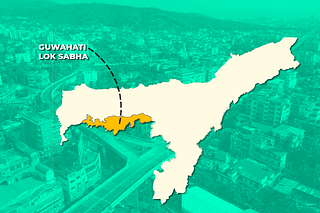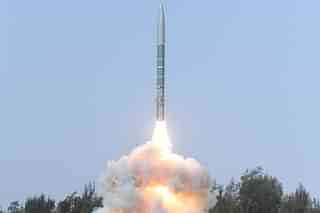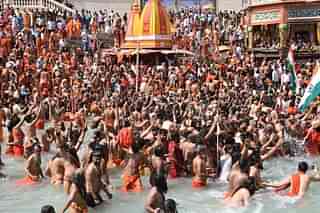Ideas
Some Gurus And Their Disciples For Meditation This Guru Purnima
Aravindan Neelakandan
Jul 05, 2020, 09:36 PM | Updated 09:36 PM IST
Save & read from anywhere!
Bookmark stories for easy access on any device or the Swarajya app.
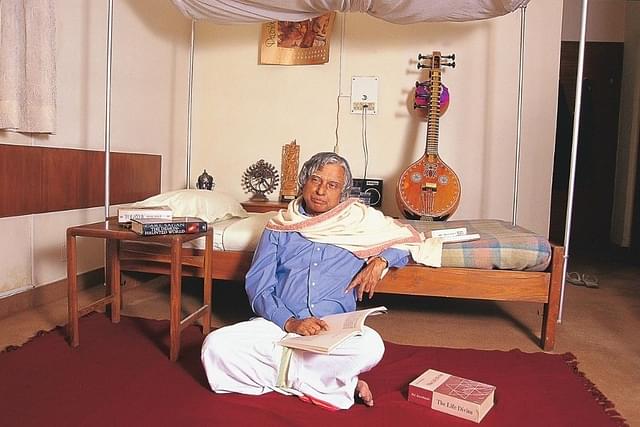
India is the land of Guru paramparas. The full moon today is known as the Guru Purnima - the full moon day when we honour our gurus. We Hindus belong to various sampradayas and have various gurus.
Here are presented certain unique gurus, and shishyas who have had transformational experiences with their gurus, and in turn transformed the life of this nation.
Some of such well known duos are Chanakya-Chandragupta, Vidhyaranya -Harihara Bukka, Samarth Ramadas-Shivaji Maharaj and Guru Gobind Singh-Banda Bahadur.
This is by no means an exhaustive list and this is a humble offering at the feet of the bhagwa dhwaj - the impersonal representation of all the gurus and guru paramparas of this great nation.
Chandala of Kasi and Adi Shankaracharya
The guru who initiated Adi Shankara into sanyasa and imparted him Advaita was Govinda Bhagavatpada. The practical Vedanta was imparted to Adi Shankara though by a Chandala in the holy city of Kashi.
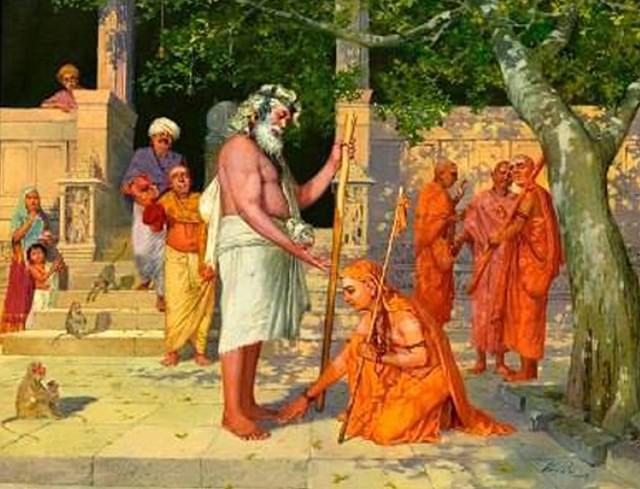
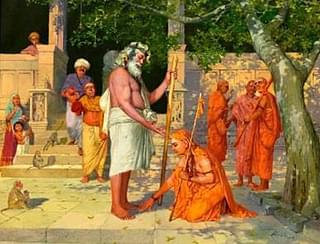
Here, when Adi Sankaracharya and his disciples asked a Chandala to move out of the way, the Chandala asked if they were asking the body or the aatma to move.
He pointed sharply to the non-dualism that exists both in terms of the physical elements that form the bodies of all and the aatma that pervades all.
Hence, for a teacher of non-dualism to ask another human being to move away was untenable.
The question made Adi Shankaracharya realise Advaita in all its splendour and implications.
He bowed to the Chandala and considering him as his guru sang the Manisha Panchakam - wherein he stated that he accepts as his guru any person irrespective of his social or birth status, who has the discrimination and Advaitic vision.
Guru Ravidas and Bhakta Meera
Meera was the 16th century Bhakti saint who sang mystic melodious hymns on Krishna. She was a Rajput princess and a widow.
Against opposition from her own clan as to the way she was becoming the epicenter of a very popular Bhakti movement, she stood firm in her devotion to Shri Krishna - her Lord and the Lord of the Universe.
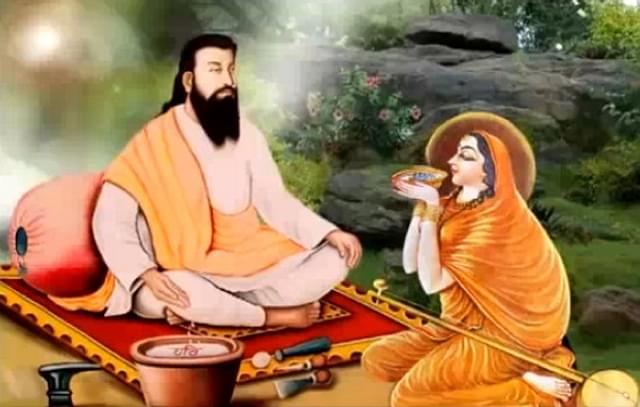
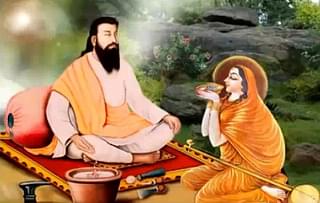
According to one of the many traditional narratives, she nevertheless needed a guru to initiate her properly in the science of self-realization.
She chose Guru Ravidas as her guru.
She went to Kashi and was given the Advaitic non-dual wisdom by the Guru.
Some historians claims that there is no proof for this to have happened. But the civilisational wisdom of India in creating these traditions is far more honest heart of India than the superficial data quest of the historians.
Guru Ravidas was born in a family of cobblers, considered untouchables by the socially stagnant elite. Mirabai was a queen-widow.
By making Mirabai the disciple of Guru Ravidas, the emphasis is made that there can be no birth-based or gender-based distinctions in attaining spiritual enlightenment, which is the supreme knowledge.
This also makes it clear that in all other domains, any birth-based or gender-based discriminations are non-essentials and could be eschewed as the society evolves and progresses.
Mahamati Prannath and Chhatrasal
Chhatrasal, a young warrior who was orphaned by Mughal aggression was searching to free the nation from the tyranny of Mughals. Tradition has it that when he consulted with Chhatrapati Shivaji he realised the importance of having a spiritual mentor for undertaking what appeared to be a humanly impossible mission.
![Mahamati Prannath and Chhatrasal Maharaj: [Amar Chitra Katha cover]](https://swarajya.gumlet.io/swarajya/2020-07/e4853488-5fc4-496f-b123-92d52197b615/prannath.jpg?w=640&q=75&auto=format,compress&format=webp)
![Mahamati Prannath and Chhatrasal Maharaj: [Amar Chitra Katha cover]](https://swarajya.gumlet.io/swarajya/2020-07/e4853488-5fc4-496f-b123-92d52197b615/prannath.jpg?w=320&q=75&auto=format,compress&format=webp)
One night, in 1683, in the Chhatarpur forests of Bundelkhand, Chhatrasal took asylum in a lonely hut where there was a sage who called him by his name. That was Mahamati Prannath who belonged to Pranami Sampradaya of Sanatana Dharma.
He not only blessed Chhatrasal with his sword but also blessed him that the region would have diamond mines which could help the young Hindu warrior raise an army against their aggressive tormentors.
The place where the saint promised the king abundance of diamonds today has diamond mines.
India owes so much to Guru Mahamati Prannath but for whom Bundelkhand would have suffered under the Mughal tyranny.
Lahuji Raghoji Salve and Vasudev Balwant Phadke
While many so-called Dalit activists celebrate the British victory over the Marathas as their own because of the mischievous and perverted interpretation of history, in reality, many Scheduled Community warriors became balidanis for Mother India when British executed them mercilessly.
One such was Raghoji.
He was born in the community of Matangs who traced their origin to Matang Rishi and considered Hanuman as one of their clan.
![Lahuji Matang [left] Vasudev Phadke [Right]](https://swarajya.gumlet.io/swarajya/2020-07/fbaa465b-8fda-4fc3-9e9a-6c5017f8b7e5/Lahuji.jpg?w=640&q=75&auto=format,compress&format=webp)
![Lahuji Matang [left] Vasudev Phadke [Right]](https://swarajya.gumlet.io/swarajya/2020-07/fbaa465b-8fda-4fc3-9e9a-6c5017f8b7e5/Lahuji.jpg?w=320&q=75&auto=format,compress&format=webp)
Lahu, son of Raghoji, saw the execution of his father by the British. He vowed that he would work towards the explusion of the British.
Belonging to the Matang community he was the Chanakya to the famous revolutionary of Maharashtra, Vasudev Balwant Phadke.
When Phadke was pained beyond limits by the horror of the Deccan famine caused by the British misrule he wanted to fight the British regime.
Meanwhile, Lahu had become a great guru of martial arts and yoga. He was respectfully called Lahuji Vaastad Raghoji Salve.
Phadke accepted him as his guru.
Lahuji Salve had been silently training groups of youths in martial arts and weapons like swords, etc. He happily accepted Phadke as his disciple.
Phadke became the first revolutionary in the modern sense to fight the British through armed resurrection. He was the mentor of Vasudev Balwant Phadke who is known as the father of Indian armed struggle.
Later, he became the ideal for revolutionaries like Savarkar.
Savarkar considered Phadke his guru.
Thus, the disciple lineage which Lahuji Rahoji Matang created did accomplish what he aimed as a youth.
Sister Nivedita and Mahakavi Bharathi
Sister Nivedita herself was the Irish disciple of Swami Vivekananda who in turn was the disciple of Shri Ramakrishna Paramahansa and Ma Saradadevi. Shri Ramakrishna was also the guru of Ma Saradadevi. Shri Ramakrishna himself was the disciple of Tantric Brahmani and Advaitic Totapuri.
![Sister Nivedita [left]: Subramanya Bharathi and his wife [right]](https://swarajya.gumlet.io/swarajya/2020-07/f7a35f19-7031-4d8b-9d3c-798e563eaff1/SIsterNivedita.jpg?w=640&q=75&auto=format,compress&format=webp)
![Sister Nivedita [left]: Subramanya Bharathi and his wife [right]](https://swarajya.gumlet.io/swarajya/2020-07/f7a35f19-7031-4d8b-9d3c-798e563eaff1/SIsterNivedita.jpg?w=320&q=75&auto=format,compress&format=webp)
When Mahakavi Subramanya Bharathi of Tamil Nadu visited Sister Nivedita, the latter asked him where was his wife. Bharati answered that women were not introduced to public activism in India. Sister Nivedita strongly disapproved of this attitude and admonished him that women should be integral part of the national movement, failing which the entire nation would suffer and surely the movement would fail.
The words struck Bharathi. He accepted Sister Nivedita as his guru and since then his songs also concentrated on women emancipation equally as they aroused the fiery spirit of freedom.
If in Tamil Nadu there is a greater awareness of women emancipation, then the credit should go to Mahakavi Bharathi and for making Bharathi write those lines the credit should go to his guru, Sister Nivedita.
Swami Sivananda and Dr APJ Abdul Kalam
APJ Abdul Kalam had just finished his interview at the Air Force Selection Board at Dehra Dun. But he could finish only ninth in the batch of 25 examined to select eight officers. Deeply disappointed, he trekked down to Rishikesh.
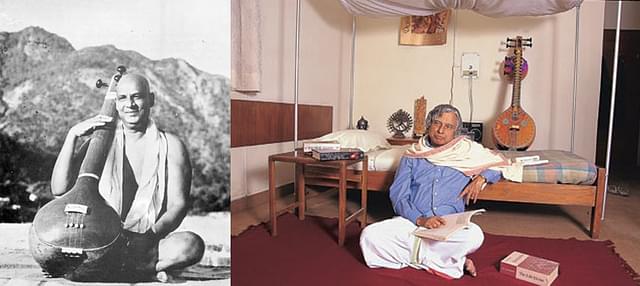
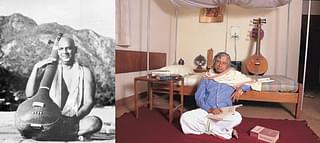
He bathed in the Ganga and walked to an Ashram nearby. It was the Ashram of Swami Sivananda. Before Kalam could speak anything, Swami asked him about the source of his sorrow. Kalam told him about his unsuccessful Air Force interview. Dr Kalam narrates in his own words what happened next in his autobiography, The Wings of Fire:
When the student is ready, the teacher will appear - How true! Here was the teacher to show the way to a student who had nearly gone astray! “Accept your destiny and go ahead with your life. You are not destined to become an Air Force pilot. What you are destined to become is not revealed now but it is predetermined. Forget this failure, as it was essential to lead you to your destined path. Search, instead, for the true purpose of your existence. Become one with yourself, my son! Surrender yourself to the wish of God.” Swamiji said.
Filled with energy, Kalam returned to Delhi where he had also attended another interview for the position of Senior Scientific Assistant, Directorate of Technical Development and Production, DTD & P (Air) at the Ministry of Defence. He had been selected and then the rest as they say, was history.
Save & read from anywhere!
Bookmark stories for easy access on any device or the Swarajya app.
Aravindan is a contributing editor at Swarajya.
Support Swarajya's 50 Ground Reports Project & Sponsor A Story
Every general election Swarajya does a 50 ground reports project.
Aimed only at serious readers and those who appreciate the nuances of political undercurrents, the project provides a sense of India's electoral landscape. As you know, these reports are produced after considerable investment of travel, time and effort on the ground.
This time too we've kicked off the project in style and have covered over 30 constituencies already. If you're someone who appreciates such work and have enjoyed our coverage please consider sponsoring a ground report for just Rs 2999 to Rs 19,999 - it goes a long way in helping us produce more quality reportage.
You can also back this project by becoming a subscriber for as little as Rs 999 - so do click on this links and choose a plan that suits you and back us.
Click below to contribute.

